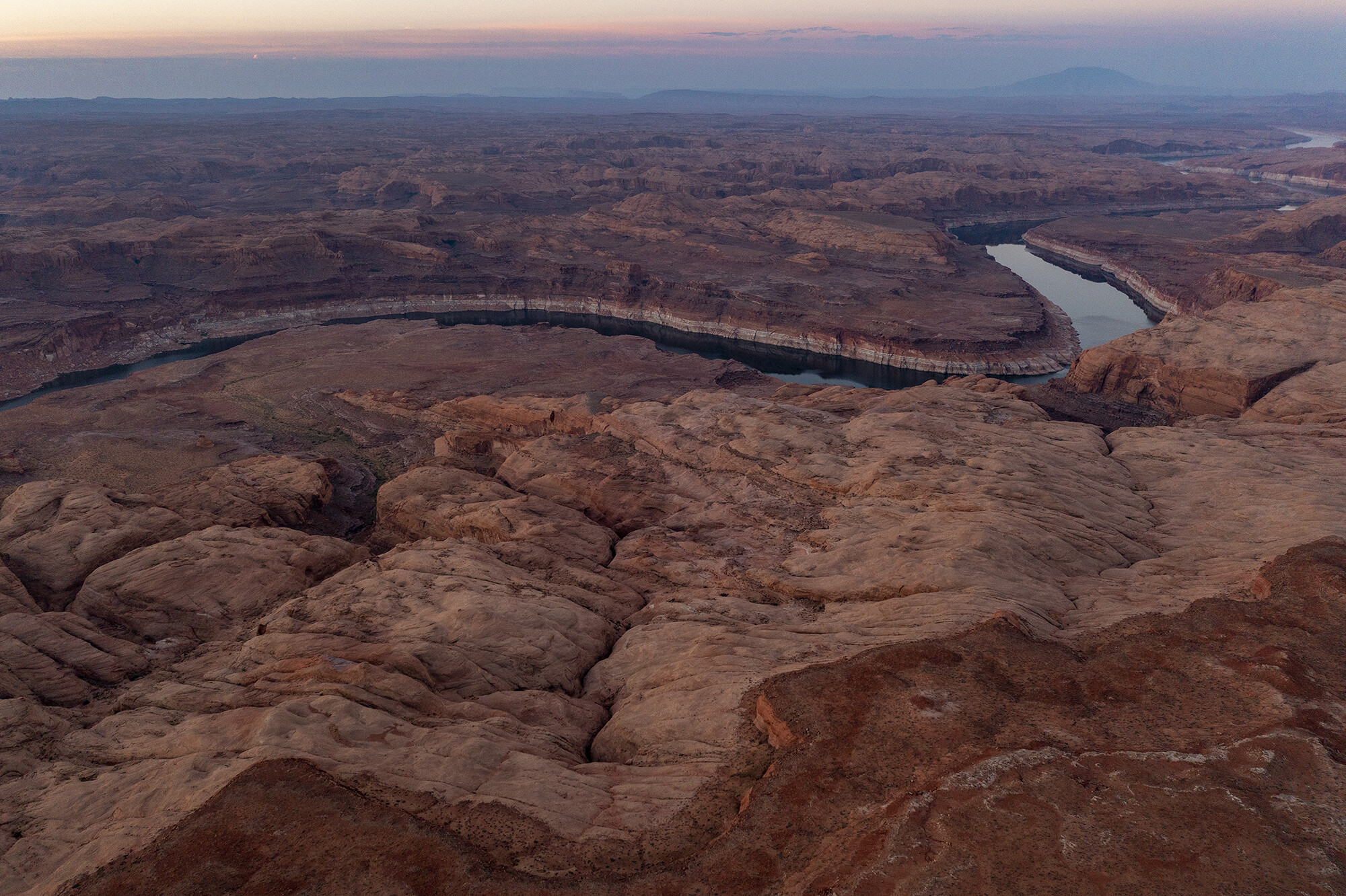Feds begin ‘expedited’ process to help save drought-stricken Colorado River

The Colorado River flows through Glen Canyon National Recreation Area near Ticaboo
By Ella Nilsen, CNN
The US Department of Interior announced Friday it is launching an “expedited” process to potentially change water-flow operations on the drought-stricken Colorado River, as Lake Mead and Lake Powell have fallen to alarming new lows.
In the possible actions it laid out, Interior said it will consider using its federal authority to restrict water releases through the Glen Canyon and Hoover Dams to help maintain water in Mead and Powell — the nation’s two largest reservoirs — and prevent the dams from losing the ability to generate hydroelectricity.
Hydropower from the two dams is distributed to customers across eight Western states, according to the Bureau of Reclamation, and the levels of each reservoir are declining so much, experts fear they could stop producing power in the coming years.
The Colorado River system more widely provides water and electricity to more than 40 million people in the West. But the river basin has suffered from the region’s worst drought in 1,200 years.
In an effort to avoid a full-blown crisis on the Colorado River, Reclamation officials have been working for months with Western states, tribes, farmers and cities to encourage massive, voluntary water cuts.
Negotiations have dragged on and proved contentious, and still it is unclear whether states can come to an agreement. If they don’t, Reclamation’s Commissioner Camille Touton said this summer, the federal government would act on its own to save the river system from collapsing.
Touton reiterated at a recent virtual event she would rather strike a deal with the states, but the Bureau was prepared to act on its own if necessary.
“I see our role in the basin to be able to be part of the conversation, but also we are responsible for our facilities,” Touton said of the federal government. “As it’s been proven in the last 100 years — perhaps it’s being tested this year — the right way to go is working with the states and the tribes to be able to get to a path forward. But we’re also realistic about the very real challenges that our organization is seeing across the west that we’ve never seen before in the history of this organization.”
A Colorado River expert told CNN that Interior’s announcement could be a nudge to the states to wrap up those ongoing negotiations — reminding them the federal government can act on its own.
“To me, it expresses a hope that there would be a consensus agreement, which would make life so much easier for the bureau and Secretary of Interior,” said Sarah Porter, the director of the Kyl Center for Water Policy at Arizona State University. “It’s certainly a signal that the bureau has not forsworn unilateral action.”
California Natural Resources Agency spokesperson Lisa Lien-Mager said that while California is optimistic negotiations with other states including Arizona and Nevada can produce a deal, “we recognize the need for our federal partners to prepare for actions that may be needed to protect critical reservoir elevations” if states can’t agree on water cuts.
Interior said Friday it would soon issue a notice of intent saying the Bureau of Reclamation may need to modify the current operations of Glen Canyon Dam and reduce its water releases downstream — which could cause water levels at Mead to drop further. This would be done in order to make sure the Glen Canyon Dam can continue operating and generating power.
It also said Reclamation may also need to restrict downstream water releases from the Hoover Dam itself “in order to protect Hoover Dam operations, system integrity, and public health and safety.”
Before Reclamation takes action, it will hold a public comment period through December 20 on three courses of action which could be taken:
- A so-called “framework agreement” option where Colorado River basin states, tribes, cities and farmers come to agreement on how much water they can save through voluntary cuts to restabilize Lakes Mead and Powell
- A “reservoir options modification” plan, where the federal government would take unilateral action and tell states how much water each must cut in order to save the river system
- A “no action” option where the current agreements controlling operations at Glen Canyon and Hoover Dam would continue
Porter said that even though a “no action” alternative is standard in federal environmental impact statements, it might be useful for Interior to include it to show how devastating an absence of action would be to the river system.
“We’re perilously close to dead pool,” Porter said. “The bureau is trying to keep that front and center.”
A draft of the changes would be released in the spring of next year, according to the bureau, with a final decision being released in late summer. The decision would go into effect for the next water year, which begins in the fall of 2023.
“We are committed to taking prompt and decisive action necessary to protect the Colorado River System and all those who depend on it,” Interior Secretary Deb Haaland said in a Friday statement. “Revising the current interim operating guidelines for Glen Canyon and Hoover Dams represents one of many critical Departmental efforts underway to better protect the System in light of rapidly changing conditions in the Basin.”
The-CNN-Wire
™ & © 2022 Cable News Network, Inc., a Warner Bros. Discovery Company. All rights reserved.